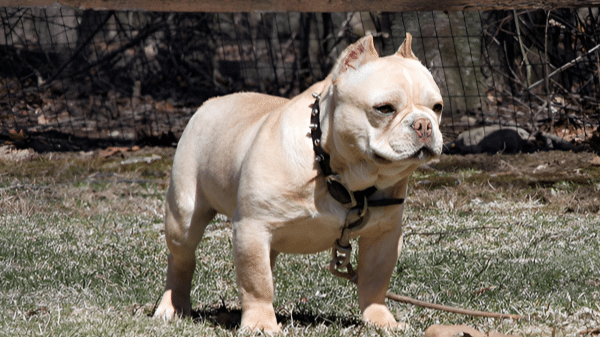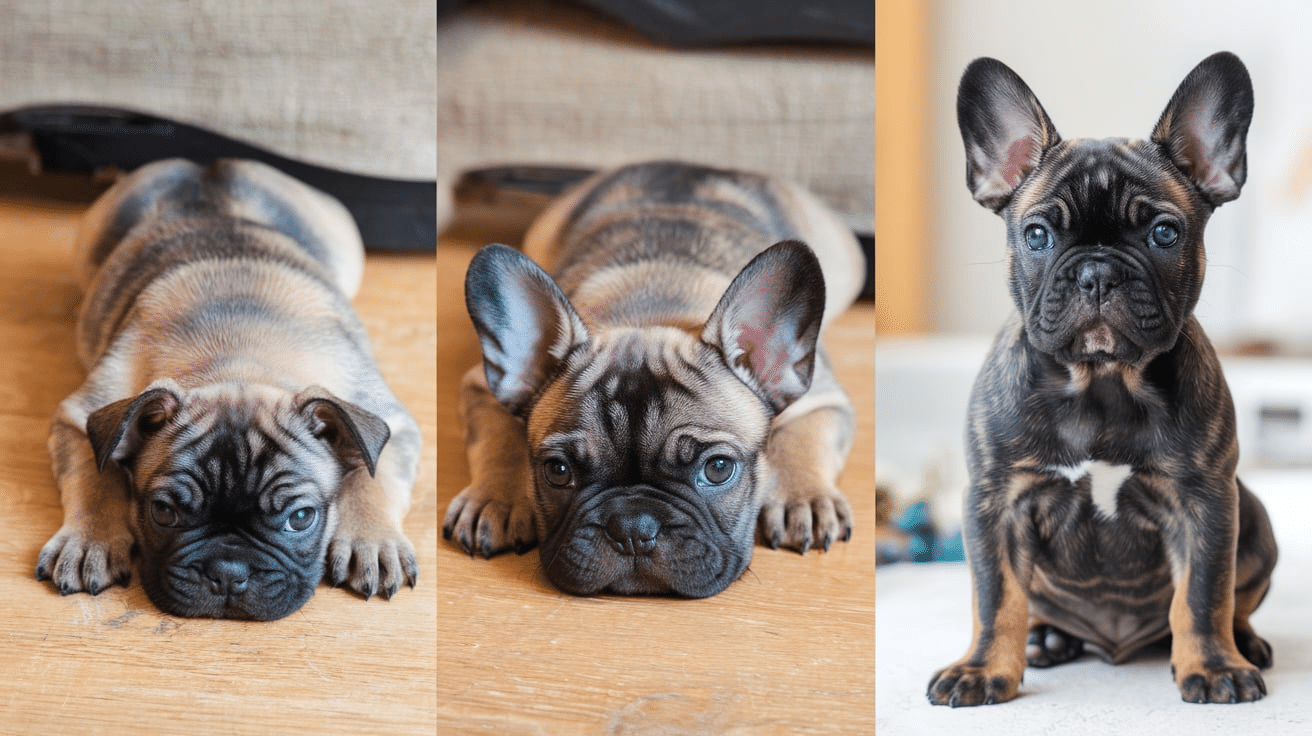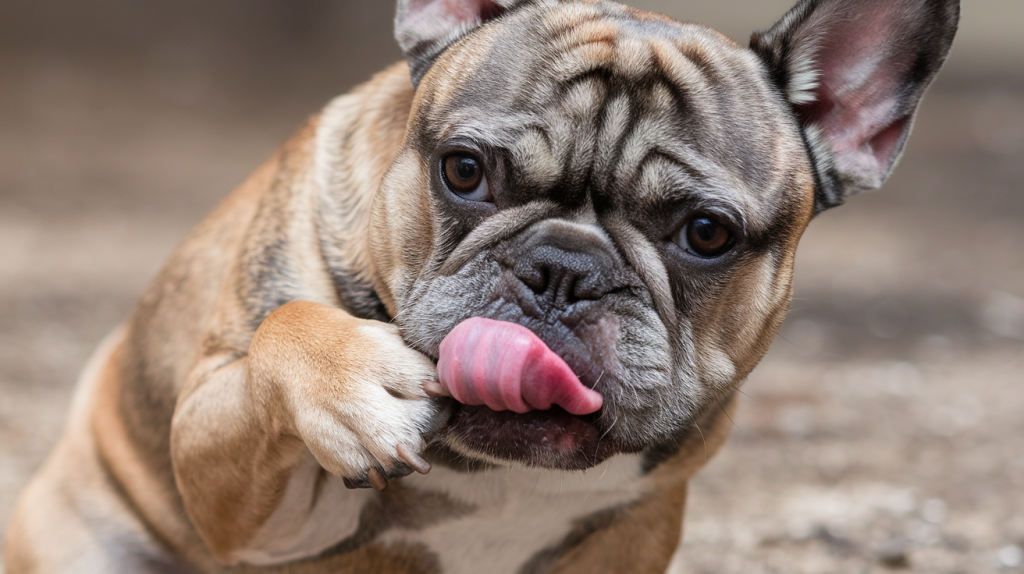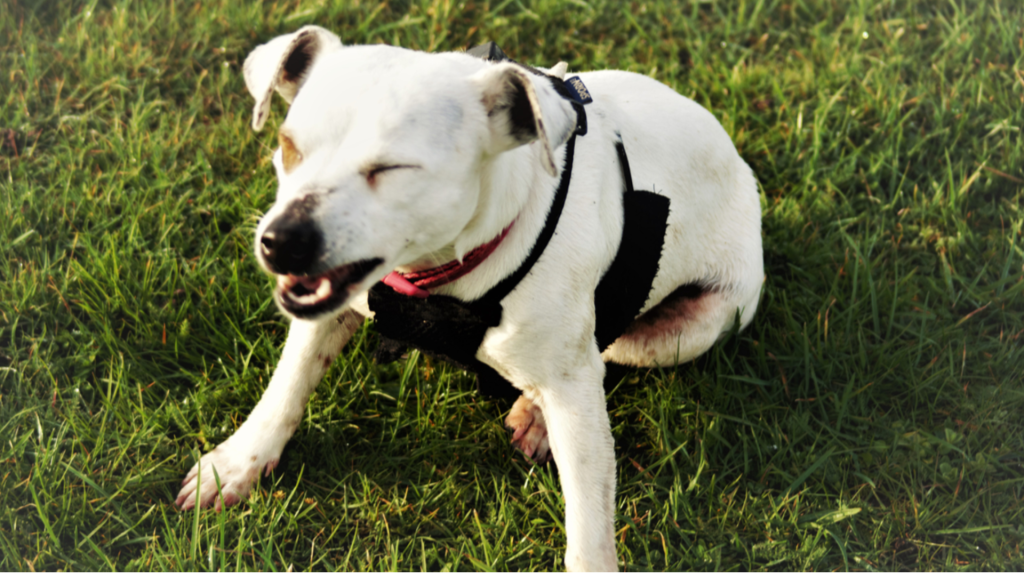Did you notice how a Frenchie with cropped ears turns heads at the dog park? These small dogs, with their distinct look, catch everyone’s eye. Many dog lovers are unaware that the ear shape not only affects how these pups look but also impacts their health and care needs.
A frenchie with cropped ears needs special attention that differs from their natural-eared cousins. Small changes in care can make a significant difference in their comfort and happiness.
Want to learn more about these charming little buddies? Keep reading to find all the facts and tips you need to know about caring for these special dogs.
What is Ear Cropping?
Ear cropping is a surgical procedure that removes part of a dog’s ear to make it stand upright.
The procedure is painful and unnecessary and can lead to complications such as infections, anesthesia risks, and long-term discomfort.
This practice dates back hundreds of years, when fighting and hunting dogs had their ears cut to reduce the risk of ear injuries. Today, it’s primarily done for aesthetic purposes.
The cuts happen when puppies are just 8 to 12 weeks old, a time when they should be playing and growing, not healing from reductions. The surgery causes real pain. Dogs need weeks to heal, with their ears taped and braced to support their standing.
Many pups fight against these odd objects on their heads, adding to the stress of an already tough time.
When Do French Bulldog Ears Stand Up Naturally?
French Bulldogs are born with soft, floppy ears that lie flat against their heads, and know that it is entirely normal and nothing to worry about.
Most Frenchie ears start standing up between 4 weeks and 4 months old. In many cases, French Bulldog ears will stand up perfectly before 8 weeks and usually by three months. However, each puppy follows their own timeline, even within the same litter.
Some puppies may have perfectly erect ears at 4 weeks old, while others may not achieve this until 10 weeks or longer. The process can be quite entertaining to watch.
One ear might stand up while the other stays down, then they might switch positions the next day.
During teething, the ears may temporarily droop because calcium is being redirected to the growing teeth. This is temporary and normal. Smaller ears typically stand up sooner than larger ones. Be patient – your Frenchie’s ears will likely stand up naturally in their own time.
Safe Ways to Help Your Frenchie’s Ears Stand Up
If your Frenchie’s ears need a little help standing up naturally, there are safe and gentle methods you can try. These approaches support your dog’s natural development without causing harm or discomfort.
Safe Methods to Help Ears Stand:
- Proper Nutrition – Feed high-quality puppy food rich in calcium and protein to support cartilage development
- Calcium Supplements – Ask your vet about adding calcium supplements during the teething phase, when nutrients get redirected
- Gentle Taping – Use only masking tape (never other types) to support ears for 3-5 days, then remove carefully
- Chew Toys – Provide safe chew toys like rope toys or raw bones to strengthen the jaw muscles connected to the ear cartilage.e
- Avoid Ear Handling – Don’t let people or other pets tug, rub, or play with your puppy’s ears, as this damages cartilage
- Monitor Health – Keep ears clean and watch for infections that could affect development.
- Be Patient – Some ears take longer than others, and that’s perfectly normal for healthy Frenchies
Why You’ll Never See a True Frenchie with Cropped Ears?
If you come across a dog advertised as a “frenchie with cropped ears,” it’s likely a misidentified breed; perhaps a Pocket Pitbull or a Shorty Bull.
Authentic French Bulldogs have naturally upright ears that don’t need surgery. Real French Bulldogs typically develop standing ears on their own by about 8 weeks old. This natural growth is what makes these dogs so special.
Why cropping is wrong for Frenchies:
- Completely unnecessary as their ears stand up naturally
- Painful and risky procedure for the dog
- Banned in many countries across Europe
- Opposed by the American Veterinary Medical Association
- Takes away one of the breed’s most famous features
Genetics, Nutrition, and Other Ear Influencers
French Bulldogs are known for their trademark bat-like ears, which are upright, perky, and full of personality. But those iconic ears don’t just happen by chance. They’re the result of both smart breeding and thoughtful care.
If you’re raising a Frenchie, understanding what helps those ears stand tall can make a big difference. Even puppies with the right genes need support along the way to develop that classic look.
Genetic Factors
A Frenchie’s ear shape starts at birth, and their family tree plays a big part. If a puppy’s parents have strong, upright ears, there’s a good chance the pup will also have strong, upright ears. That’s why responsible breeders pay close attention to ear structure when selecting parent dogs.
Even within the same litter, you may notice differences. Some puppies develop strong ear cartilage early, while others take more time. This is all due to their unique makeup.
Nutrition Matters
Your puppy’s food doesn’t just fuel their body; it helps build the parts that support their ears, too. The right mix of nutrients helps strengthen cartilage and support the ear muscles.
Key nutrients for healthy ear development:
- Calcium & Phosphorus: Help create firm cartilage
- Protein: Builds small muscles that hold the ears up
- Vitamin C: Supports tissue development
- Omega Fatty Acids: Help reduce inflammation
Other Important Factors
Even with good genes and great food, other things can influence your puppy’s ears:
- Teething: Can temporarily cause the ears to flop
- Stress: May affect how the ears hold up
- Frequent rubbing: Weakens the ear cartilage
- Head bumps: Might change the way ears develop
- Health conditions: Some can affect cartilage strength
The Emotional Language of Frenchie Ears
French Bulldogs communicate their feelings through ear positions and movements. These expressive features serve as mood indicators, often revealing emotions before any sound or other body language is apparent.
| Ear Position | What It Means |
|---|---|
| Fully erect and forward | Alert, attentive, interested in something they see or hear |
| Relaxed and slightly back | Content, comfortable, and feeling safe in their environment |
| Flattened against the head | Fearful, anxious, or submissive may indicate stress |
| One ear up, one ear down | Confused, curious, or trying to understand something |
| Ears pulled back but not flat | Friendly or showing submission during greetings |
| Rapid ear twitching | Tracking sounds or picking up distant noises humans can’t hear |
| Ears slightly forward with a head tilt | Processing information or reacting to unusual sounds |
Wrapping It Up
French Bulldogs are born with perfect ears from the start.
Their natural bat ears require no changes, just proper care and a good diet. Your Frenchie’s ears tell its story, from its genetic makeup to its current mood. By understanding ear care and reading ear signals, you can build a stronger bond with your pet.
Still have questions about your Frenchie’s ears? Leave them in the comments below.










